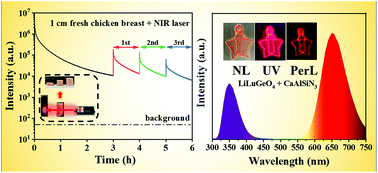Journal of Luminescence 204 (2018) 36–40
Herein we report the improvement in persistent luminescence of Eu2+ doped Sr2Si5N8 nitride phosphor. A systematic experiment has been performed to investigate the influence of co-doping B3+, O2-, Tm3+ in Sr2Si5N8: Eu2+. It is found that B3+ and O2- co-doped Sr2Si5N8: Eu2+ phosphor exhibits better afterglow properties with higher afterglow intensity, which can be attributed to larger trap density. The afterglow luminescence mechanism in Sr2Si5N8: Eu2+, B3+, O2- is discussed on the basis of the host referred binding energy (HRBE) scheme of Sr2Si5N8, the relative energy level positions of 5d and 4 f electron of Eu2+ and the trap depth in the host lattice.





